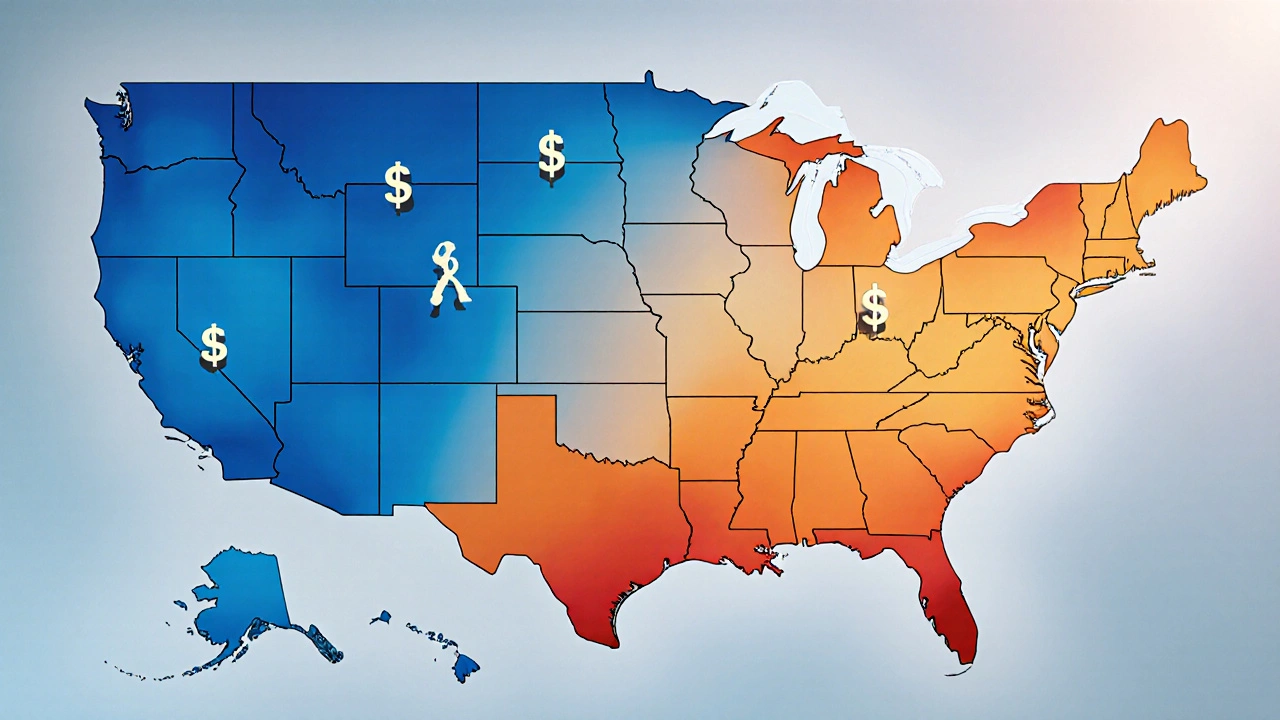Discover which U.S. states provide the lowest IVF costs, why price gaps exist, and how to lower expenses while maintaining high success rates.
Read MoreCheapest IVF States in India – Low‑Cost Fertility Options Explained
When exploring cheapest IVF states, the Indian regions where in‑vitro fertilization services charge the lowest fees, it's easy to feel overwhelmed by numbers and options. But you don't need a finance degree to sort it out. Knowing which IVF cost, total price for medication, lab work, and embryo transfer components drive the price helps you compare apples to apples. Likewise, the fertility clinics, medical centers that perform assisted reproductive procedures in those states vary in quality, success rates, and extra fees. Adding government subsidies, state‑run financial support programs for infertility treatment into the mix can shave off thousands of rupees. Finally, you should glance at IVF success rates, the percentage of cycles that result in a live birth because low price alone doesn't guarantee a happy outcome.
The relationship between the cheapest IVF states and overall affordability is simple: lower clinic fees + cheaper medication + strong subsidies = reduced out‑of‑pocket spend. That's our first semantic triple: cheapest IVF states encompass lower clinic fees. The second triple links cost and outcome: IVF success rates influence patient choices in cheap states. And the third: government subsidies reduce the total IVF cost. When you keep these connections in mind, the decision‑making process becomes a lot less stressful.
Key Factors That Influence IVF Prices Across States
First up, medication. In many states, the biggest chunk of the bill comes from gonadotropins and hormonal shots. Some states have local manufacturers that sell these drugs at a discount, slashing the price by up to 30%. Second, lab fees. States with public‑sector reproductive labs often charge less because they don’t need to cover profit margins. Third, the number of embryos transferred. Clinics that practice single‑embryo transfer policies usually have a lower per‑cycle cost, and they also boost success odds for future attempts.
Another factor is the presence of “IVF packages”. A few states bundle consultation, monitoring, medication, and embryo transfer into a single price tag that’s easier to budget. When you compare packages, look for what’s included – hidden ultrasound fees or extra blood tests can quickly add up. Finally, consider travel and accommodation. A state with cheap IVF may still be far from your home city, meaning extra transport costs. Balancing the low procedural fee against potential travel expenses is a practical step many overlook.Now, let’s talk about quality. Even in the cheapest IVF states, you’ll find top‑rated clinics that consistently report high success rates. Success isn’t just about the number of live births; it also reflects lab expertise, embryologist experience, and the clinic’s adherence to safety protocols. Many patients use success‑rate dashboards from the Ministry of Health to compare clinics side‑by‑side. A higher success rate can actually lower your overall expense because you’re less likely to need multiple cycles.
Government subsidies are a game‑changer in states like Tamil Nadu, Karnataka, and Delhi, where the health department runs schemes covering a portion of IVF costs for eligible couples. Eligibility usually hinges on age, income, and prior infertility assessments. Those programs often cap the number of funded cycles, so planning ahead matters. If you qualify, you can see the total cost drop dramatically – sometimes from ₹2 lakhs down to under ₹80 000.
Insurance coverage is still rare for IVF in India, but a few private insurers have started offering add‑ons for assisted reproductive technology. When you’re in a cheap IVF state, it pays to ask the clinic’s billing department whether any insurance partner can reimburse part of the bill. Even a modest 10‑20% reimbursement can shift the cost‑benefit balance in your favor.
When you combine all these pieces – medication discounts, lab fees, clinic success, subsidies, insurance add‑ons, and travel costs – you get a full picture of what the cheapest IVF states truly mean for you. It’s not just about the lowest number on a price list; it’s about getting the best value for your family‑building journey.
Below you’ll see why cheapest IVF states matter, how each factor plays into the final bill, and what you should look for when you start comparing options. Use this guide as a roadmap, then dive into the articles that break down state‑by‑state cost breakdowns, patient experiences, and step‑by‑step budgeting tips. Armed with the right info, you can choose a state and clinic that fit both your pocket and your hope for a healthy pregnancy.





